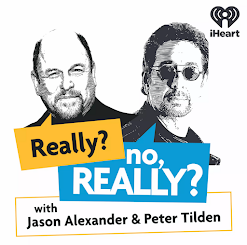After my suitably epic journey (the Vikings would have approved no doubt) I let the side down a bit by taking a taxi to one of the venues (I could have walked it in 15 minutes but had a lie-in!) where I heard a couple of talks.
The first was on dendrochronology, the use of tree rings partly to determine the age of the tree but also to infer what was happening at particular times during the growth cycle, as the behaviour of the growing cells and tree layers is affected by the environment, and a permanent record is left of the conditions in which the tree was growing. Well, trees plural, as the time frame in which a tree grows is encoded within its rings - you can match up the ring patterns from different trees and get a record stretching back several thousand years (I think it goes back to about 5,000BC/BCE).
The dating itself is done with radiocarbon dating and it all appears to line up nicely with information gleaned from the Greenland ice cores.
The speaker was actually wondering if the stories and myths, and the timing, of biblical floods might have arisen from a 'bolide' hit (cometary fragments) that might have happened in around 2350BCE, as there was a serious dip in ring growth for several years around that time. It also seems to conveniently tie in nicely with Chinese stories from Emperor Yao around the same time... not really sure what to make of all that but I might have to blog my notes in more depth!
The second talk was actually a series of talks about what I always assume are fancy theodolites but turn out to be some sort of laser scanner camera that takes incredibly detailed scans of whatever's in front of it. The scanning process involves taking several shots from the Leica 'camera' which is mounted on a tripod - I took a photo of one in use in Queen Mary quite recently which I will dig out when I have a better web connection - from different angles. Certain points in the environment are labelled with markers that let the registry software line the images up and present it as a 3D image that's quite similar to the Google map streetviews in that you can 'walk around' in them.
They've been scanning ancient bits of Orkney and various digs around Scotland to see what's going on and they eventually hope to make the data available online so that we can take a wander round, using the Leica Geosystems / Cyclone software. All sounds rather cool. One dig (it might be the Ness of Brodgar, I'm not sure) has an area that's full of animal bones however they don't appear to have been dumped but there seems to have been some consideration of how to place them with head bones at the bottom and leg bones in the middle and upper layers - mostly cows but a few sheep or goat and one or two red deer.
It's difficult to know of course if this is of any significance though and if head bones placed first really 'meant' anything to the people who put them there. After all I've just recently packed to come to Orkney and slotted my rolled up socks into a pair of shoes at the bottom, however this careful placement of socks doesn't have any ceremonial meaning or religious significance ;)
The most obvious engineering artefact in the Pickaquoy Centre (where the talks took place) is a massive cinema projector which looms up at you as you enter the lecture theatre / cinema screen (I hadn't realised it was a cinema until later). I took an unfeasible number of photographs of it and learned that it had been in use until 1998. All of Orkney is still using the 35mm format and will move to digital in the next six months or so. I knew that most films are now produced in a digital format, with only a few produced in 35mm too, but hadn't realised until just a few weeks ago that older 35mm films are now in a pretty unusable condition.
While chatting to the projectionist she showed me the largest reel of film I've ever seen - it turns out to be several reels of 35mm film spliced together to show the next film (I think it's either Diary of a Wimpy Kid or The Expendables 2). Incidentally the Pickaquoy Centre is the UK's most northerly independent cinema.
Other Orkney 2012 posts
- Orkney Wireless Museum
- Skara Brae, Ring of Brodgar, Stenness - coach trip to see the neolithic site
- Orkney International Science Festival - this post
- Getting to Orkney - by sleeper train, coach and ferry





No comments:
Post a Comment
Comment policy: I enthusiastically welcome corrections and I entertain polite disagreement ;) Because of the nature of this blog it attracts a LOT - 5 a day at the moment - of spam comments (I write about spam practices,misleading marketing and unevidenced quackery) and so I'm more likely to post a pasted version of your comment, removing any hyperlinks.
Comments written in ALL CAPS LOCK will be deleted and I won't publish any pro-homeopathy comments, that ship has sailed I'm afraid (it's nonsense).